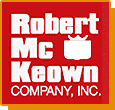A Closer Look at Thermal Radical Cure Adhesives for the Electronics Industry
Thermal radical cure (TRC) adhesives are 100% solid formulations based on UV curable resins. This type of adhesive is commonly as hot melt and semi-structural adhesives. These adhesives were created to harness some of the best features of traditional silicone adhesives while eliminating or reducing many of the drawbacks.
This blog post will discuss why thermal radical curing technology is beneficial, discuss the properties of these adhesives, and offer examples of common applications.
WHY USE TRC TECHNOLOGY?
There are many benefits offered by thermal radial curing technology. Some of the primary benefits include:
- Enhanced adhesive performance. The adhesion strength of TRC adhesives is retained across a broad temperature range and throughout a variety of adverse conditions, such as water immersion, salt water exposure, and other corrosive environments.
- Design flexibility. TRC adhesives provide adhesion to a wide range of surfaces. They adhere to plastics, metals, cured silicones, wet substrates, and more. These adhesives will bond with most traditional and alternative materials, enabling improved performance and many new design opportunities.
- Cost control. TRC adhesives facilitate cost savings in the form of reduced energy expenditures and streamlined production processes. They cure much faster than standard silicone adhesives by reducing the heat-up time and cutting the cure down to as little as three minutes.
HOW EXACTLY DO TRC ADHESIVES WORK?
TRC adhesives provide reliable adhesion with a comprehensive array of metals, ceramics, and plastics—even those that haven’t experienced good adhesion with more traditional silicone-based adhesives. Once the adhesive is fully cured, the substrate materials benefit from strong but flexible bonds. With thermal curing processes, these adhesives significantly reduce curing time without sacrificing adhesion strength.
Cationically curable resins and free-radical curable unsaturated esters are the two most common resins used for creating UV-curable adhesives. Cation resins are typically more expensive, but offer better overall performance, higher heat resistance, less shrinkage, and superior strength. Free-radical type adhesives feature reduced properties in comparison, but cure much faster.
TRC APPLICATIONS
There are many use cases for TRC adhesives within the electronics industry. Examples may include:
- Housing assembly
- Attaching connectors to substrates
- Adhering sensors and electronic control units to substrates
- Facilitating power supply and energy conversion
More advanced assembly applications for TRC adhesives may include:
- Engine or transmission control units
- Power control units
- Sensors
- Lighting modules
- Printed circuit boards
TRC ADHESIVES FROM ROBERT MCKEOWN, INC.
TRC adhesives are cost-effective, offer strong and reliable adhesion, and work with a comprehensive range of surface types and materials. The application potential for these adhesives is nearly limitless, especially in sectors such as automotive, electronics, and general manufacturing.
At Robert McKeown, we partner with Dow, a global leader in adhesives and sealants, to provide thermal radical cure adhesive solutions. We’re happy to offer a sample of EA-7100 TRC adhesive from Dow so you can test it in your application. Please contact us today to obtain a sample or with any questions about any of our products and services.

